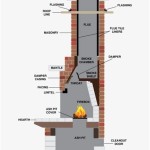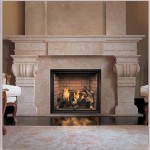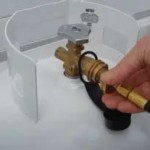Brick Fireplace Design Ideas For Stoves and Ovens
Brick fireplaces, long celebrated for their enduring charm and thermal properties, present a versatile canvas for incorporating stoves and ovens. This integration enhances functionality, transforming a purely aesthetic feature into a practical heating and cooking hub. The design considerations are manifold, encompassing style, efficiency, safety, and code compliance. Careful planning ensures that the final product seamlessly blends with the existing architecture while maximizing the benefits of the integrated stove or oven.
The incorporation of a stove or oven into a brick fireplace design requires thoughtful attention to detail. The existing fireplace may need structural modifications to accommodate the new appliance. This might involve widening the firebox opening, reinforcing the chimney, or adding a hearth extension. Furthermore, ventilation is paramount. Ensuring proper airflow is critical for efficient combustion and preventing the buildup of harmful gases, such as carbon monoxide.
Materials selection also plays a crucial role. The bricks used in the fireplace, as well as the surrounding materials, should be able to withstand the high temperatures generated by the stove or oven. Refractory bricks, designed for high-heat applications, are often used in the firebox and chimney liner. The selection of appropriate materials contributes to the longevity and safety of the installation.
Integrating Stoves into Brick Fireplace Designs
The integration of a stove into a brick fireplace provides efficient and localized heating. There are several design approaches to consider, each with its unique aesthetic and functional characteristics. One common approach involves inserting a freestanding stove into the existing fireplace opening. This requires careful measurement to ensure a snug fit and proper sealing to prevent heat loss. The chimney flue will likely need to be adapted or relined to match the stove's requirements.
Alternatively, the fireplace can be partially dismantled and rebuilt to accommodate a larger stove. This approach allows for greater design flexibility and can create a more integrated look. The stove can be set on a raised hearth or recessed into the fireplace opening. The surrounding brickwork can be customized to complement the stove's style, creating a visually appealing focal point.
Another option involves building a new brick enclosure around the stove. This allows for complete control over the design and can be used to create a custom fireplace that perfectly suits the homeowner's aesthetic preferences. The brick enclosure can incorporate features such as shelves for storing firewood, niches for displaying decorative items, or a mantel for adding personal touches.
Regardless of the approach, it is crucial to ensure that the stove is installed according to manufacturer's instructions and local building codes. This includes proper clearances from combustible materials, adequate ventilation, and a secure chimney connection. Professional installation is highly recommended to ensure safety and compliance.
Integrating Ovens into Brick Fireplace Designs
Integrating an oven into a brick fireplace offers the unique advantage of wood-fired cooking, which imparts a distinctive flavor to food. Brick ovens, traditionally used for baking bread and pizzas, can be incorporated into both new and existing fireplace designs. The design considerations for oven integration are similar to those for stoves, with a strong emphasis on heat resistance and proper ventilation.
One design approach involves building a brick oven directly into the fireplace structure. This requires careful planning and construction to ensure that the oven is properly insulated and vented. The oven can be located above or beside the firebox, depending on the desired layout and aesthetic. The chimney must be adequately sized to accommodate the exhaust from both the fireplace and the oven.
Another option is to incorporate a prefabricated brick oven kit into the fireplace design. These kits typically include all the necessary components, such as the oven dome, insulation, and installation instructions. This approach can simplify the construction process and ensure that the oven meets safety standards. The fireplace can be designed to accommodate the oven kit, with the surrounding brickwork customized to match the homeowner's style.
A third approach involves creating a separate brick structure adjacent to the fireplace to house the oven. This allows for greater design flexibility and can create a visually striking feature. The oven structure can be connected to the fireplace chimney or have its own dedicated flue. This approach is particularly suitable for larger spaces where a dedicated cooking area is desired.
When integrating an oven into a brick fireplace, it is essential to use refractory bricks and mortar that are specifically designed for high-heat applications. These materials can withstand the extreme temperatures generated by the oven without cracking or crumbling. Proper insulation is also crucial to retain heat and improve cooking efficiency. A well-insulated oven will heat up faster and maintain a more consistent temperature.
Key Design Considerations for Safety and Efficiency
Safety is of paramount importance when integrating stoves and ovens into brick fireplace designs. Several key considerations must be addressed to ensure that the installation is safe and compliant with local building codes. These include proper ventilation, adequate clearances from combustible materials, and a secure chimney connection. Neglecting these considerations can lead to fire hazards, carbon monoxide poisoning, and other serious risks.
Proper ventilation is essential for efficient combustion and preventing the buildup of harmful gases. The fireplace and stove or oven must have a well-functioning chimney that is properly sized to accommodate the exhaust. The chimney should be inspected regularly and cleaned as needed to remove creosote buildup, which can pose a fire hazard. Carbon monoxide detectors should be installed in the home to provide an early warning in case of a leak.
Adequate clearances from combustible materials are crucial to prevent fires. Stoves and ovens generate a significant amount of heat, which can ignite nearby flammable materials such as wood, drywall, and furniture. The manufacturer's instructions will specify the minimum clearances required for safe operation. These clearances should be strictly adhered to during installation. Non-combustible materials, such as brick or stone, can be used to provide additional protection.
A secure chimney connection is essential for preventing smoke and gases from leaking into the home. The stove or oven should be connected to the chimney using a properly sized and sealed flue pipe. The flue pipe should be made of durable materials that can withstand high temperatures and corrosive gases. The connection should be inspected regularly to ensure that it remains airtight.
Efficiency is another important consideration when integrating stoves and ovens into brick fireplace designs. A well-designed and properly installed system will provide efficient heating and cooking, reducing energy consumption and costs. Several factors contribute to efficiency, including proper insulation, adequate ventilation, and the use of high-quality materials.
Proper insulation helps to retain heat and improve the efficiency of the stove or oven. The fireplace and surrounding brickwork should be well-insulated to prevent heat loss. This can be achieved by using insulation materials such as mineral wool or ceramic fiber. Proper insulation will also help to maintain a more consistent temperature inside the oven, resulting in more even cooking.
Adequate ventilation is essential for efficient combustion. The stove or oven requires a sufficient supply of air to burn fuel properly. The fireplace should be designed to provide adequate airflow to the firebox. This can be achieved by incorporating air vents or dampers into the design. Proper ventilation will also help to prevent the buildup of smoke and creosote in the chimney.
The use of high-quality materials is crucial for ensuring the long-term efficiency and durability of the system. Refractory bricks and mortar, designed for high-heat applications, should be used in the firebox and chimney liner. These materials can withstand the extreme temperatures generated by the stove or oven without cracking or crumbling. A well-maintained system will provide efficient heating and cooking for many years.
In conclusion, integrating stoves and ovens into brick fireplace designs offers a compelling blend of aesthetic appeal and practical functionality. By carefully considering design options, safety requirements, and efficiency factors, homeowners can transform their fireplaces into versatile heating and cooking centers. Consulting with qualified professionals is essential to ensure a safe and successful installation that enhances the beauty and value of the home.

Brick Fireplace Design Installation Scarlett Fireplaces
.jpg?strip=all)
Brick Fireplace Design Installation Scarlett Fireplaces

Brick Fireplace Design Installation Scarlett Fireplaces

Brick Fireplace Design Installation Scarlett Fireplaces

Gallery False Chimney T Surround For Stove The Box

Brick Fireplace Design Installation Scarlett Fireplaces

12 Indoor Oven Design Ideas Forno Bravo Authentic Wood Fired Ovens

From Traditional To Modern 10 Alcove Kitchen Design Ideas

Brick Fireplace Design Installation Scarlett Fireplaces

Amazing Log Burner Fireplace Surround Ideas Direct Stoves
Related Posts








